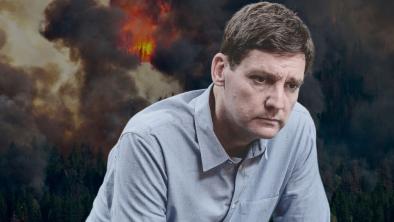B.C. conservation group wants protection for top 100 trees of each species
The Canadian Press
VANCOUVER, B.C. — In British Columbia some trees grow as tall as skyscrapers, yet an environmental group says theres little to prevent these giants of the forest from being chopped down.
The Western Canada Wilderness Committee wants the provincial government to establish a designation that protects the 100 largest and oldest trees of each species.
The group notes the Ministry of Forests has a registry that lists the 10 largest trees of each species in the province but it doesnt provide them any legal protection.
"People come from all over the planet to see the incredible forests," says committee spokesman Ken Wu. "And so for these monumentally enormous trees we need their protection."
Wu says the worlds second-largest sitka spruce tree, located by the coastal town of Port Renfrew on Vancouver Island, sits completely unprotected like hundreds of other near record-setters.
"But its in a forest service recreation site and those come and go," Wu says.
He wants the province to enact measures similar to those already in place in Victoria where a city bylaw protects any tree with a trunk diameter over 80 centimetres.
"If people understand the importance of heritage trees in the city, they should certainly recognize the importance of heritage trees that are 10 times their size or more in the rural areas."
Forests Minister Pat Bell did not respond to a request for comment.
The wilderness committee, which was founded in 1980 and has more than 30,000 members, is also urging the province to phase out old-growth logging on British Columbias south coast. And it wants to ensure the sustainable logging of second-growth forests as well.
"The most important thing is to protect the ecosystem," says Wu. "That means there needs to be a provincial old-growth strategy that will protect the remaining old-growth."
He said that while British Columbia continues to log unprotected old-growth, the rest of the world is logging second, third, or even fourth growth.
"People generally understand the concept of heritage buildings," Wu says.
"We dont want incredible heritage buildings knocked down and replaced by ugly new developments. Same thing as our heritage old-growth trees being replaced by second-growth tree plantations."
Old-growth forests are important for a number of reasons.
Many at-risk species cant flourish in younger forests.
In addition, Wu says, old-growth forests store two to three times more carbon per hectare than the second-growth plantations that replace them. They are also fundamental to British Columbias tourism industry.
"People are not coming from all around the world to look at fifty-year-old tree plantations," he says. "Theyre coming to look at the thousand-year-old trees."
A ministry spokeswoman said almost 200,000 hectares of old-growth forest is fully protected in parks, habitats, and other areas.
Wu said about 75 per cent of Vancouvers original old-growth trees have already been logged, including 99 per cent of old-growth Douglas firs.


